Migration Vacation: Following the Birds to Dauphin Island

Bob Farley/f8FPhoto; Bob Farley
During the cooler months of April and October, trips down to Dauphin Island, Alabama are among my favorite things. Bike rides and beach walks around the small barrier island are quiet and magical, and planning itineraries to include birds and nature, my husband and I combine solitary recreation and leisure with social interactions and shared observations as we cross paths with other birders and nature enthusiasts. Field trips with the Alabama Coastal BirdFest, Alabama Ornithological Society, and the guide Andrew Haffenden, owner of Nature Travel Specialists, help us to learn more about the amazing marvel of bird migration. Getting an up close and personal view of songbirds, shore and wading birds, waterfowl, seabirds, gulls and terns, and birds of prey, the spring and fall migrations do not disappoint.
The salt air gets thicker the closer we get to the gulf, and as we approach the big waters, the windows get rolled down, the wind picks up and the waves become distinct white caps.
In April, the cool mornings turn to temperate afternoons with the radiance of the sun, and plants and insects waken with the warmth. During October, the cool weather blows in, late-summer blooms linger, autumn wildflowers peak, and pollinators are all abuzz in a feeding frenzy for the last pollen and nectar the flowers will produce before dormancy. With the seasonal weather fronts come the birds, taking advantage of the winds and thermals to propel them upward and forward. And with the ideal sheltering conditions and abundant food supply, the island is most welcoming to the seasonal migrants. In the spring, the birds come in for a landing, exhausted from their northern flight across the Gulf of Mexico, and they gobble up everything in sight. They stop just long enough to fill up and recharge, and then they are off to their breeding grounds. Sometimes this happens all at once in what is called a “fall-out,” and with a fall-out, the birds are everywhere – in the trees, on the ground, in the air, and on the beach. During fall migration, birds stop over and get busy refueling and fattening up before the return flights across the gulf to Central and South America. The fall migration is more spread out over time and hit or miss for birders seeking a repeat experience of springtime.
The Writer's Photo Album
Birds of Dauphin Island 12 Photos
Our journey to Dauphin Island is as pleasant as the destination, and traveling the back roads is an adventure. Farmland, catfish ponds, timberland, vernacular gardens and architecture, and rural communities – we enjoy journeying on the pretty route to experience the sweet and slow southern culture of Alabama. Town, county and state parks, country churches and cemeteries provide places for roadside picnics, and strolls through the lawns of these places reveal wildflowers, birds, history, and photo-ops.
Crossing over the Mobile-Tensaw Delta, we look for swallow-tailed kites soaring above, kingfishers, egrets, ibis, and herons among the cypress trees and the shorelines of the wetlands, and turtles lining up on logs. I can imagine alligators and snapping turtles swimming in the dark waters below the bridge. Below Mobile, bogs, prairies and longleaf pine forests dot the land. Causeways over rivers and waterways give glimpses of boats and piers, nesting platforms, and ospreys flying around proudly displaying their catch.

Bob Farley/f8FPhoto; Bob Farley
The salt air gets thicker the closer we get to the gulf, and as we approach the big waters, the windows get rolled down, the wind picks up and the waves become distinct white caps. As we go over the bridge to the island, we watch the brown pelicans dive-bomb the water for fish and the gulls and terns fighting against the wind. When we finally reach the island, I can't wait to visit my favorite scenes as we drive to the east end of the island – the out-stretched limbs of the live oak trees in Cadillac Park, the bottlebrush trees in the cemetery, the battlements of historic Fort Gaines, the jetties, Sea Lab and the Estuarium and the adjoining boardwalk and piers. We always do a little drive through before checking in to the house.
Plan Your Visit
For more information and to plan a trip of your own, use these resources below and, for a special treat, contact my favorite field trip leader, Andrew Haffenden. A local celebrity of sorts, this Aussie has migrated to the island full-time and is a wealth of information. When you visit the island, look for him. He can be seen driving his red Jeep about, scouring the shores and trees with his binoculars, taking photos and talking to folks along his route. He explains bird behavior and educates the interested in a casual way that is relatable, and gives an empathetic understanding of the birds.
After settling in, we jump on our bikes and pay a visit to the Goat Tree Reserve, named for the massive Spanish moss-draped live oaks, whose limbs served as refuge for wild goats once inhabiting the island. We reacquaint ourselves with Shell Mound Park. The shell middens inform us of the island’s Native American history. The mounds are covered in vegetation and form pockets of dense and dark woodlands of old Live oaks that provide shelter to songbirds. There is a large sparsely vegetated bowl with benches for birders to sit quietly and raise binoculars, spotting scopes and cameras to the birds. Warblers, redstarts, vireos, painted and indigo buntings, and summer and scarlet tanagers flit around the large twisted limbs and vines while worm-eating warblers and ovenbirds forage the forest floor.
We ride on to the lanes behind the dunes to see the Tupelo gum swamps, remnants of dune scrub plants between the houses, and then on to visit the golf course and my favorite building on the island, the Isle Dauphine Club, or as some people call it, the George Jetson building. There, we may see merlins and kestrels cruising the pines, the open fields and over the freshwater ponds. These fast and fierce little falcons are fun to watch as they track down their prey. Our final stop of the day is the island’s small airport, where we view the salt marsh and look for herons and egrets along the edges of the marsh. In the late afternoon, the western sun shines across the golden cordgrass and black needle rush, and when the tide is down, exposed creatures are easily caught by wading birds. We’re lucky if we catch a glimpse of the clapper rail quickly darting in and out of cover.
The next day, we walk to the public beach past the little red schoolhouse and onto the pier that stands over the constantly shifting sand where Pelican Island now connects to the beach. We take a long walk all the way to the end of the now peninsula to get a closer look at sanderlings, dowitchers, plovers, sandpipers, gulls, terns, and hopefully see oyster catchers. And coming back on the inland side, we see willets and ruddy turnstones on the shore, and mergansers and other seabirds riding the waves. Since smaller Pelican Island became attached to the main island, new dunes, tidal ponds and marshes have been formed as the sand and vegetation shift. Snowy and great egrets, ibis, great blue and little blue herons, and reddish egrets forage the ponds for small prey.
I always stop at the foot of the boardwalk to take a deep breath in. If I could bottle and sell the smell, I would be a millionaire.
My absolute favorite spot on the island is the Audubon Bird Sanctuary. Riding the bikes over to the sanctuary, we admire wildflowers blooming in the ditches. We park our bikes and walk on the boardwalk through the maritime forest, stopping by Gaillard Lake to visit the alligator, turtles, swallows swooping above the lake, and green herons fishing along the lakeside. We look for peregrine falcon and are wowed by their aerobatics and the speed and accuracy as they maneuver through the tops of the pines. We leave the boardwalk for the grassy trail around the lake and on to meet the boardwalk to the beach. I always stop at the foot of the boardwalk to take a deep breath in. If I could bottle and sell the smell, I would be a millionaire.

Patsy Russo
The dune scrub is a gorgeous and a unique plant community. Layers of trees, shrubs, and herbs in decreasing height to the beach – tall longleaf and slash pine, scrub oaks, bushy wax myrtle and yaupon holly, tall sea oats here and there, down to clumps and mounds of dark green sandhill-rosemary, false rosemary with silvery fine leaves, woody goldenrod and the reclining pinewoods milkweed. As we rest on the observation platform above the dunes, we look for flycatchers and blue-gray gnatcatchers grabbing insects above the scrub while the osprey look on from the nesting platform.
On our way back to our bikes, we wander along the sandy trail through the dark forest of large magnolias, pine, live oaks and saw palmettos. As the trail twists and turns, we enjoy the scenery of the old flatwoods, and we take note of the birds we see in the forest, cuckoos, Louisiana waterthrush, grosbeaks, thrushes and catbirds.


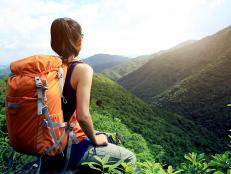
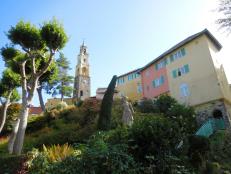

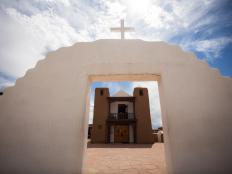
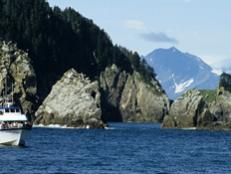
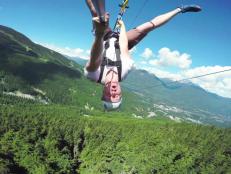

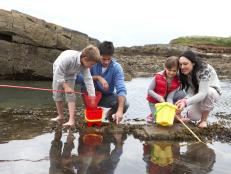
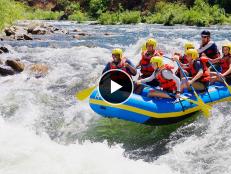
















.jpg.rend.hgtvcom.231.174.suffix/1674758726773.jpeg)










